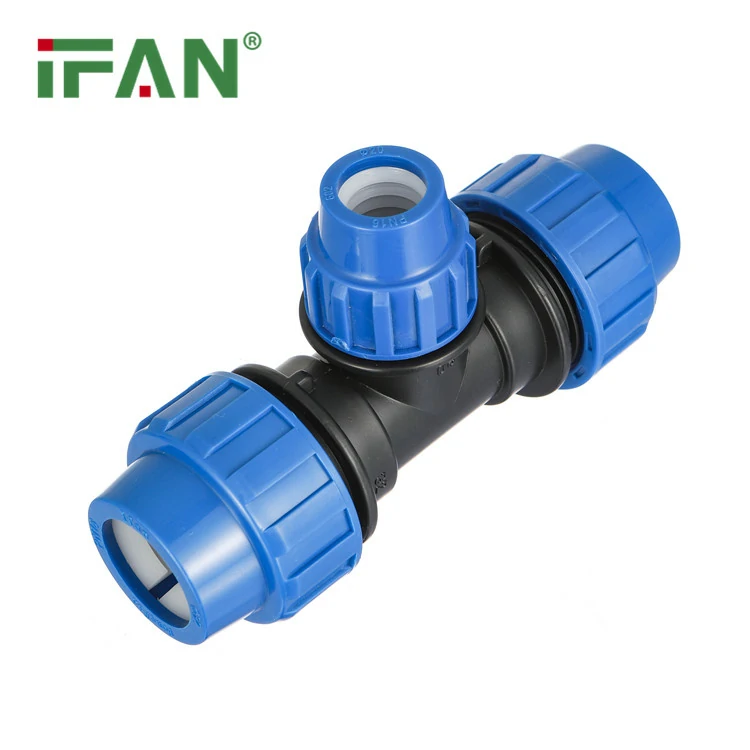When your project demands specific pipe connections, standard fittings won’t always meet requirements. The 603 HDPE Reduce Tee offers versatility for complex piping systems, but customization ensures perfect compatibility with your infrastructure needs.
Understanding 603 HDPE Reduce Tee Specifications
The 603 HDPE Reduce Tee connects three pipes of different diameters. This fitting type handles pressure reduction while maintaining flow efficiency. Standard dimensions range from 20mm to 630mm, accommodating most industrial applications.
HDPE material provides excellent chemical resistance. Temperature tolerance spans -40°C to +60°C for most applications. The fitting withstands pressures up to 16 bar depending on diameter and wall thickness.
Key Customization Options Available
Diameter Modifications
Custom inlet and outlet sizes beyond standard ranges solve unique connection challenges. Non-standard combinations like 110mm x 75mm x 90mm configurations are achievable through specialized manufacturing.
Pressure Rating Adjustments
Enhanced wall thickness increases pressure capacity. SDR ratings can be modified from standard SDR11 to SDR7.4 for high-pressure applications. This modification requires precise calculation of stress distribution.
Connection Type Variations
Socket fusion ends remain standard, but threaded connections are possible. Flanged connections integrate with metal piping systems seamlessly. Compression fittings work for repair applications where fusion isn’t practical.
Material Grade Selection
PE80 offers basic performance for standard applications. PE100 provides superior stress crack resistance and longer service life. Food-grade compounds meet FDA requirements for potable water systems.
The Customization Process Step-by-Step
1. Technical Requirements Assessment
Provide detailed system specifications including pipe diameters, pressure requirements, and installation environment. Temperature ranges and chemical exposure data help determine optimal material selection.

2. Engineering Design Phase
Our technical team creates detailed drawings based on your specifications. 3D modeling ensures proper fit with existing infrastructure. Stress analysis confirms structural integrity under operating conditions.
3. Prototype Development
Initial samples undergo pressure testing and dimensional verification. Quality control measures include visual inspection and measurement validation. Approval confirms the design meets all requirements.
4. Production Planning
Manufacturing schedules accommodate project timelines. Batch sizes optimize cost efficiency while meeting delivery requirements. Quality assurance protocols ensure consistent production standards.
Critical Dimensions for Custom Orders
Wall thickness calculations depend on pressure rating and diameter ratio. Branch angles can vary from standard 90° to accommodate space constraints. Transition lengths between different diameters affect flow characteristics.
Socket depths require precise specification for proper fusion joints. End preparation angles influence installation procedures. Surface finish requirements impact chemical compatibility in specialized applications.
Quality Standards and Testing Requirements
Custom HDPE fittings must meet ISO 4427 standards for pressure applications. Hydrostatic pressure testing validates performance under maximum operating conditions. Dimensional tolerances follow ISO specifications for consistent installation.
Material certification includes density verification and melt flow index testing. Stress crack resistance testing ensures long-term durability. Impact strength measurements confirm performance in challenging environments.
Installation Considerations for Custom Fittings
Fusion welding requires specific temperature and pressure parameters. Custom dimensions may need adjusted welding procedures. Joint integrity depends on proper preparation and execution.
Thermal expansion calculations become critical with non-standard configurations. Support spacing requirements change with custom geometries. Proper anchoring prevents stress concentration at connection points.
Cost Factors in HDPE Reduce Tee Customization
Tooling costs increase with complex geometries or small quantities. Material selection impacts pricing significantly. PE100 costs approximately 15-20% more than PE80 grades.
Lead times extend with custom manufacturing requirements. Standard modifications take 2-3 weeks while complex designs need 4-6 weeks. Rush orders incur additional charges but remain feasible.
Applications Requiring Custom 603 HDPE Reduce Tees
Water treatment facilities often need non-standard configurations. Chemical processing plants require specialized material grades. Mining operations demand enhanced pressure ratings and corrosion resistance.
Irrigation systems benefit from optimized flow transitions. Industrial cooling loops need precise dimensional matching. Municipal infrastructure projects often specify unique connection requirements.
Working with Professional Customization Services
Choose manufacturers with proven HDPE expertise and quality certifications. Technical support throughout the design process ensures optimal solutions. Post-delivery support addresses installation questions and performance verification.
Documentation packages should include material certificates, test reports, and installation guidelines. Warranty coverage protects against manufacturing defects. Ongoing technical support ensures long-term system performance.
Conclusion
Custom 603 HDPE Reduce Tee solutions solve complex piping challenges that standard fittings cannot address. Professional customization services ensure optimal performance while maintaining cost efficiency. Partner with experienced manufacturers to achieve the best results for your specific application requirements.
Contact our technical team to discuss your custom HDPE fitting requirements and receive detailed specifications tailored to your project needs.













Recent Comments